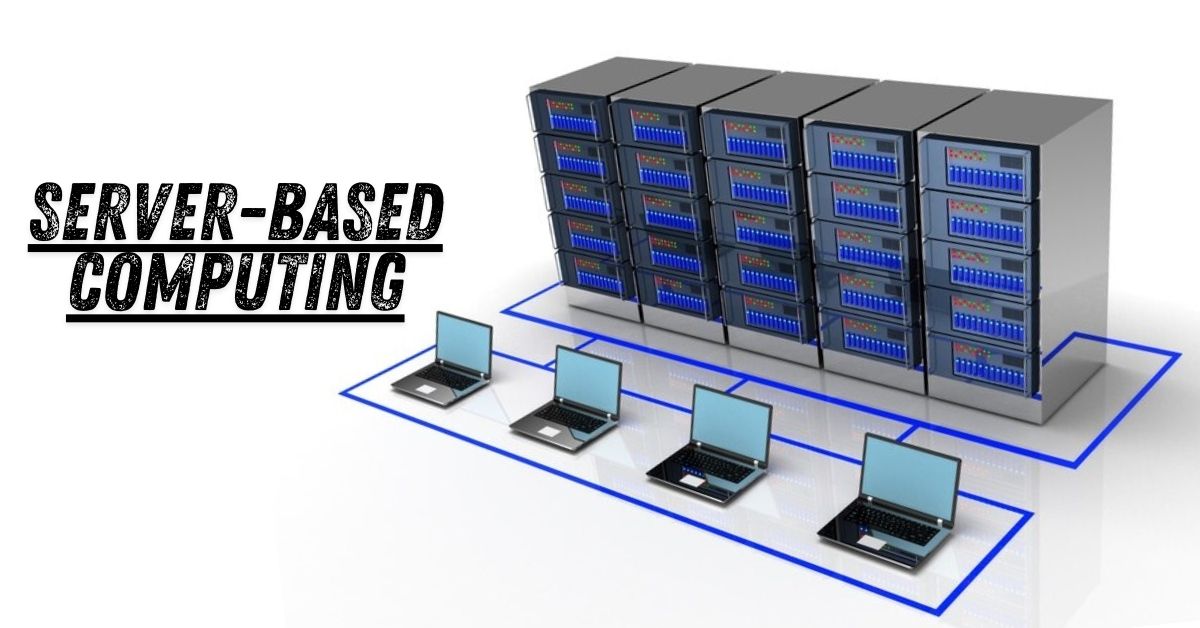Server-Based Computing (SBC) has emerged as a revolutionary approach to managing applications and data, offering businesses a pathway to efficiency, cost savings, and enhanced security. Let’s delve deeper into this transformative technology and explore its intricacies.
TRENDING
A Deep Dive into BFG098 Algorithmic Innovations
Introduction to Server-Based Computing
What is Server-Based Computing?
Server-Based Computing, often abbreviated as SBC, is a paradigm where applications are executed, managed, and maintained on a centralized server rather than on individual client devices. This means that instead of installing and running software on each user’s computer, applications are hosted and accessed remotely.
Historical Context
The concept of SBC traces back to the early days of computing when mainframe systems dominated the landscape. However, it gained significant traction with the rise of networking technologies and the need for centralized management in enterprise environments.
How Server-Based Computing Works
Centralized Processing
In an SBC setup, the processing power resides on the server, which handles all computational tasks. Client devices, also known as “thin clients,” act as terminals, providing users with a gateway to access applications and data stored on the server. This centralized approach ensures consistent performance across all user endpoints.
Thin Clients vs. Thick Clients
Thin clients are lightweight, low-cost devices designed primarily for accessing remote resources. Unlike traditional PCs (thick clients), thin clients lack local processing power and storage, relying entirely on the server for computing tasks. This results in reduced hardware complexity and lower maintenance overhead.
Benefits of Server-Based Computing
Enhanced Security
By centralizing data and applications on a secure server infrastructure, SBC helps mitigate security risks associated with endpoint devices. Critical data remains protected within the confines of the data center, reducing the likelihood of unauthorized access or data breaches.
Simplified IT Management
Managing a centralized server environment is inherently more streamlined than maintaining individual desktops or laptops. Tasks such as software updates, patches, and backups can be performed centrally, minimizing downtime and optimizing resource allocation.
Cost Efficiency
SBC offers significant cost savings by eliminating the need for expensive desktop hardware and reducing energy consumption. Thin clients are more affordable to deploy and maintain, translating into lower capital and operational expenditures for businesses.
Challenges and Solutions
Network Dependency
One of the primary challenges of SBC is its reliance on network connectivity. Any disruptions or latency issues can affect user experience and productivity. Implementing robust network infrastructure and redundancy measures can help mitigate these risks.
Scalability
As organizations grow, they need scalable solutions that can accommodate increasing user demands. SBC architectures must be designed with scalability in mind, allowing for seamless expansion without compromising performance.
User Experience
Ensuring a seamless user experience is crucial for the success of SBC deployments. Factors such as latency, graphics performance, and application responsiveness need to be optimized to mimic the performance of traditional desktop environments.
Implementing Server-Based Computing
Assessing Infrastructure Needs
Before adopting SBC, organizations must conduct a thorough assessment of their existing infrastructure and business requirements. This includes evaluating network bandwidth, server capacity, and compatibility with legacy systems.
Choosing the Right Technologies
Selecting the appropriate SBC technologies is essential for achieving desired outcomes. Factors such as virtualization platforms, remote desktop solutions, and security protocols should be carefully evaluated based on organizational needs and budget constraints.
Case Studies
Healthcare Sector
In the healthcare industry, SBC has revolutionized clinical workflows by providing secure access to electronic health records (EHRs) and medical imaging applications. Healthcare providers can deliver timely patient care without compromising data security or regulatory compliance.
Financial Institutions
Financial institutions rely on SBC to streamline banking operations and ensure compliance with stringent security standards. By centralizing sensitive financial data, banks can mitigate the risk of fraud and unauthorized access while improving operational efficiency.
Educational Institutions
Schools and universities leverage SBC to support digital learning initiatives and provide students with access to educational resources from any location. By virtualizing classroom applications and desktop environments, educators can facilitate collaborative learning experiences and enhance student engagement.
Future Trends
Virtualization
The future of SBC lies in further virtualization advancements, enabling organizations to achieve greater flexibility and resource optimization. Technologies such as containerization and microservices will drive innovation in the delivery of cloud-hosted applications.
Cloud Integration
As businesses increasingly embrace cloud computing, SBC solutions will evolve to seamlessly integrate with cloud platforms. Hybrid deployments combining on-premises servers with cloud-based services will become commonplace, offering scalability and agility to meet evolving business needs.
Conclusion
Server-Based Computing offers a compelling value proposition for businesses seeking to optimize IT infrastructure, enhance security, and streamline management processes. By centralizing applications and data on secure server environments, organizations can unlock efficiency gains while reducing costs and mitigating risks.
ALSO READ: Immediate Serax V1
FAQs
- What are the primary benefits of Server-Based Computing?
- Enhanced security, simplified IT management, and cost efficiency are among the key benefits of SBC.
- How does SBC impact user experience?
- SBC can deliver a seamless user experience by optimizing network performance and application responsiveness.
- Is SBC suitable for all types of organizations?
- While SBC offers advantages for many businesses, its suitability depends on factors such as infrastructure requirements and user needs.
- What role does virtualization play in SBC?
- Virtualization technologies enable organizations to consolidate resources and achieve greater flexibility in deploying server-based applications.
- How can organizations address the challenge of network dependency in SBC deployments?
- Implementing redundant network infrastructure and optimizing bandwidth allocation can help mitigate the impact of network disruptions on SBC performance.











